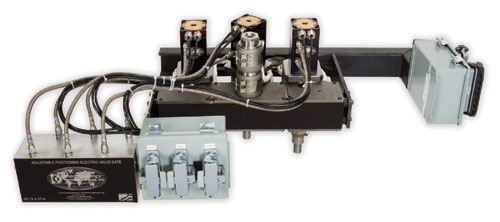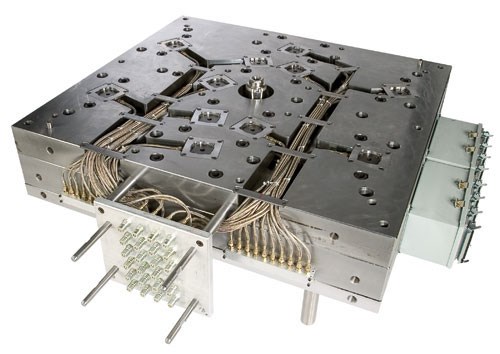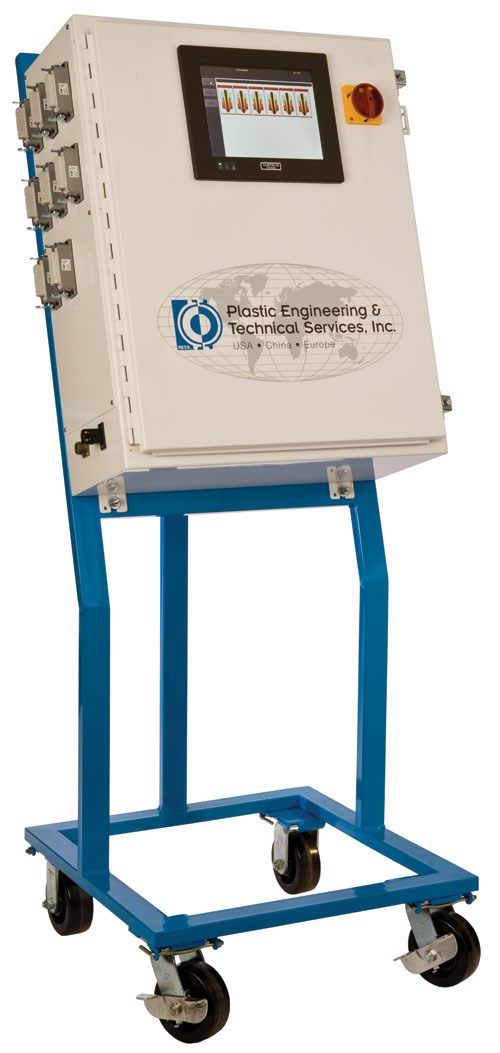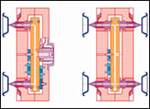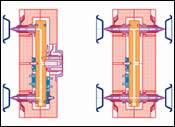Electric Valve Gates Deliver Higher Speed and Precision
For productivity increases, faster speeds and more control over material flow, this hot runner technology is worth a look for cleanroom applications.
Hot runners have long made processing more efficient and cost effective while improving part quality. However, in cleanroom applications, those benefits have been offset by the need to use pneumatic hot runners with slower response times and weaker closing forces.
eanwhile, in medical, pharmaceutical, electronics, food packaging and other markets where cleaner production environments are critical, speed and part tolerance requirements have been steadily increasing. The drawbacks of pneumatic hot runners are becoming unacceptable.
Enter a new solution in hot runner technology: the electric valve gate hot runner system. Ideally suited for cleanrooms, the electric valve gate provides unprecedented valve-pin movement speeds and unequaled closing forces (up to 35,000 psi).
Anyone looking to crank up speeds and exert more control over the flow of material will want to give this new technology a try. In fact, molders who have installed the electric valve gate have reported productivity increases of up to 23 percent. Here’s an overview of the advantages of this new technology.
A Better Cleanroom Option
The electric valve gate is perhaps best suited for the high-precision applications and stringent cleanroom requirements of the medical market.
Hydraulic valve gate systems can provide the powerful shutoff required for maximum part quality, but they’re not a good option in cleanrooms because of the risks of oil leaks and contamination. Pneumatic systems, therefore, have been the hot runner of choice. But as stated previously, their relatively weak shutoff force isn’t conducive to the high speeds and precision the market demands.
Electric valve gate delivers the powerful, fast, positive shutoff needed for faster cycle times, dramatically reduced material waste and better part quality. It also integrates well with the all-electric injection molding machines commonly used in medical environments.
Fractions of a second in cycle time can make a big difference, which is why the electric valve gate’s nearly immediate response time—nanosecond speed between a control given and an action taken—is a big advantage. This responsiveness contributes to the precision of the process, as well.
Savings
An electric valve gate can help processors reduce costs in a variety of ways.
- Less scrap. With a 35,000 psi closing force, there is no gate vestige into which scrap material can seep. In addition,
- air or oil leaks in pneumatic or hydraulic systems can cause the viscosity of the material to change, hindering closing accuracy and precision.
- No oil. Unlike with a hydraulic system, there’s no oil leakage, spillage or fatigue contributing to operational costs.
- Greater energy efficiency. There’s no need to run an air compressor as there is with a pneumatic system. Plus, all-electric systems are more efficient than others in general. Just as you’ll see savings when switching to an all-electric molding machine, you’ll find savings going electric with your valve gate system.
- Operator benefits. Allows for faster mold changeovers: simply hook it up to the control box—no messing around with hoses, cables, multiple lines, etc. In addition, gone are the risks associated with pneumatic and hydraulic systems—such as hose breaks, oil leaks, fires, slipping hazards and more.
Greater Precision
Perhaps even more beneficial in terms of precision than an electric valve gate’s superior closing force is its user-friendly valve gate sequencer, which offers detailed, precise control of individual nozzles.
The variable speed capability is perfect for co-injection and family molds, helping balance the mold and allowing for sequencing on larger parts when you want to move the knit line across—so, as the plastic flows from one electric valve gate nozzle to the next, they open and close in sequence.
The electric valve gate is designed to open gates very quickly, but it also can be programmed to slow down individual gates if the application calls for it, such as for family molds that fill at different speeds. With pneumatic or hydraulic systems, on the other hand, gates are either all the way open or all the way closed. You can’t fill different parts at different speeds without building up pressure.
The electric valve gate’s precise, variable positioning of each pin, in .001” increments, can produce additional benefits for your process. Pin position can be used to incorporate design elements, such as making a hole for a screw or for hanging on a shelf, eliminating the costs of either a more complex mold or secondary operations to create those features. With all other hot runners you don’t have this option because pin positions are either all open or all closed.
Summary
Best of all, the benefits of electric valve gate technology are only getting better. The future of this technology will include faster, smaller motors. In addition, as with most groundbreaking technologies, you can expect the cost to come down in the coming years.
Read Next
Multi-Parting Line and Multi-Material Systems
Stack molds, co-injection, two-shot molding and their opportunities.
Read MoreAre You a Moldmaker Considering 3D Printing? Consider the 3D Printing Workshop at NPE2024
Presentations will cover 3D printing for mold tooling, material innovation, product development, bridge production and full-scale, high-volume additive manufacturing.
Read MoreHow to Use Strategic Planning Tools, Data to Manage the Human Side of Business
Q&A with Marion Wells, MMT EAB member and founder of Human Asset Management.
Read More
